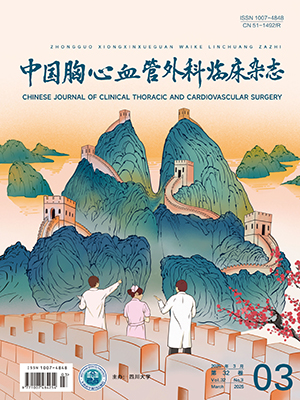The patient, male, 1 year, was admitted to our hospital with cardiac murmur. Cardiac ultrasonography showed "complete atrioventricular septal defect (C-AVSD), secondary orifice atrial septal defect (ASD), patent ductus arteriosus (PDA), left superior vena cava, and pulmonary hypertension". The patient got follow-up at the age of 3, 6, 9 months and 1 year, with no feeding difficulties, no obvious underdevelopment and no history of repeated respiratory infections. Cardiac ultrasonography showed that the ventricular septal defect (VSD) healed spontaneously at 9 months of age. At 1 year of age, he was admitted to the hospital with "partial atrioventricular septal defect (P-AVSD)" and accepted surgery. Intraoperative exploration showed that the primary orifice ASD was 12 mm, the atrioventricular valve was divided into two groups, and the left atrioventricular valve had three leaflets: anterior, posterior, and lateral one. A cleft was between the anterior and posterior leaflets. The annulus was not enlarged with diameter of 13 mm. The right atrioventricular valve developed well, with fibrous hyperplasia and adhesion under the septal valve. No VSD was seen. The cleft was sutured intermittently. Autologous pericardial patch was used to repair the primary orifice ASD, and the coronary sinus was separated into the right atrium. Self-healing of VSD patients with C-AVSD is very rare, suggesting that patients with C-AVSD with normal range of development, and without obvious clinical symptoms and secondary damage, should be followed up and accept elective surgery in clinical practice.
Citation: SHI Zhuo, YU Jing, QI Jianchuan, CHEN Zili, LI Jianhua. Atrioventricular septal defect: A case report. Chinese Journal of Clinical Thoracic and Cardiovascular Surgery, 2021, 28(6): 750-752. doi: 10.7507/1007-4848.202004042 Copy
Copyright © the editorial department of Chinese Journal of Clinical Thoracic and Cardiovascular Surgery of West China Medical Publisher. All rights reserved




